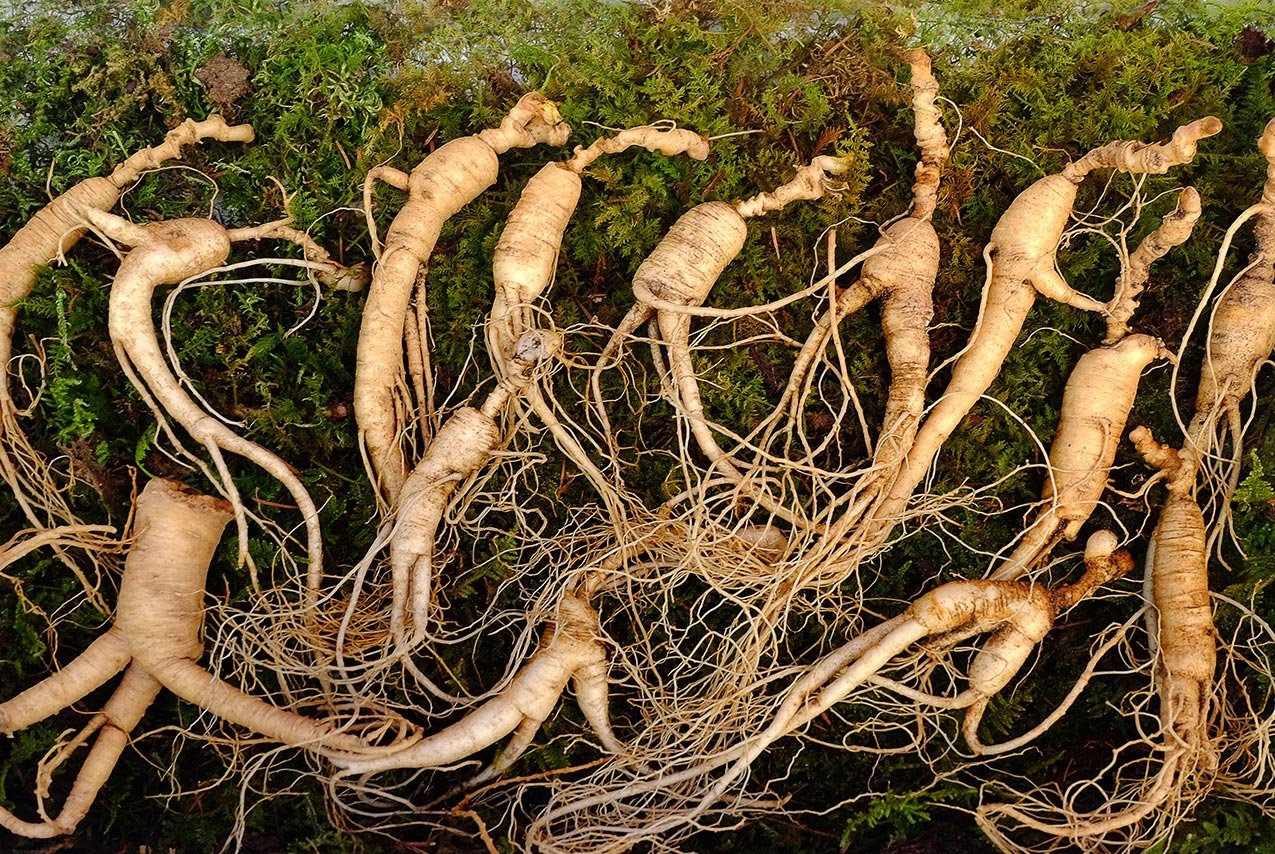Garlic Chives (Allium tuberosum)
Garlic chives, scientifically known as Allium tuberosum, are a flavorful and versatile herb that’s been gaining popularity in kitchens around the globe. With their delicate garlic flavor and vibrant green stalks, they’re a perfect addition to any dish that needs a subtle punch. Unlike their more pungent cousin, the common chive, garlic chives bring a unique combination of garlic and onion flavors to the table, making them an indispensable herb for culinary enthusiasts.
Native to the Asian continent, garlic chives have been used in Chinese, Korean, and Japanese cuisines for centuries, not only for their taste but also for their medicinal properties. They’re incredibly easy to grow, thriving in a variety of conditions, which makes them a favorite among home gardeners and professional chefs alike. Whether you’re looking to spice up your cooking or add a new herb to your garden, garlic chives offer a world of possibilities.
Key Takeaways
- Versatile Flavor and Culinary Uses: Garlic chives, or Allium tuberosum, are celebrated for their unique flavor that combines notes of garlic and onion, making them a versatile herb in culinary applications ranging from stir-fries and dumplings to fresh salads and infused oils.
- Health Benefits Galore: Loaded with nutrients like dietary fibers, vitamin C, vitamin K, and carotenes, garlic chives offer a range of health benefits including digestive health support, immune system boost, heart health improvement through antioxidant properties, and essential minerals for strong bones and blood production.
- Easy to Grow: With adaptability across zones 3 through 9 and minimal maintenance requirements, garlic chives are an easy-to-grow herb for both novice and experienced gardeners, requiring only well-draining soil, regular watering, and full sun to partial shade conditions.
- Medicinal Properties: Beyond their culinary uses, garlic chives are noted for their medicinal properties, including antibacterial and antifungal activities, digestive system support, and potential in reducing inflammation and improving cardiovascular health, due to compounds like allicin and various antioxidants.
- Culinary and Medicinal Value: The integration of garlic chives into various global cuisines underscores their universal appeal and culinary value, while ongoing research into their health benefits reveals their significant medicinal potential, underscoring the herb’s comprehensive contribution to both diet and health.
Benefits of Garlic Chives
Garlic chives, scientifically known as Allium tuberosum, are not only a flavorful addition to the culinary world but also come packed with numerous health benefits. These herbs provide a unique blend of nutrients that contribute to overall wellness.
Firstly, garlic chives are a low-calorie option loaded with dietary fibers. They help promote digestive health, ensuring smoother bowel movements and reducing symptoms of constipation. In addition to fibers, garlic chives are rich in vitamin C, vitamin K, and carotenes, which play a crucial role in maintaining immune system health, bone health, and vision respectively.
Another significant benefit lies in their antioxidant properties. Garlic chives contain allicin, a compound also found in garlic, which has been linked to various health benefits. Allicin is known for its potential to fight inflammation and reduce the risk of cardiovascular diseases by lowering cholesterol levels and blood pressure. Research indicates that incorporating garlic chives into a regular diet can contribute to improved heart health.
Furthermore, garlic chives offer a natural source of iron and calcium, essential minerals for blood production and maintaining strong bones and teeth. They also carry folate, a vital nutrient for DNA synthesis and repair, making them an excellent herb for pregnant women aiming to support fetal development.
Notably, garlic chives have been studied for their antimicrobial properties. They contain compounds that can inhibit the growth of bacteria and fungi, contributing to a healthier gut microbiome and potentially reducing the likelihood of infections.
The adaptability of garlic chives in various culinary applications, from enhancing the flavor of dishes to being used as garnishes, coupled with their health benefits, makes them a valuable herb in both kitchens and medicinal practices. Through consistent research and culinary exploration, the potential of garlic chives continues to unfold, revealing a world of possibilities for enhancing both diet and health.
Culinary Uses of Garlic Chives
Garlic chives, also known as Allium tuberosum, play a pivotal role in global cuisines, adding a unique flavor that bridges the gap between garlic and chives. Their versatility in culinary applications is vast, ranging from fresh salads to complex sauces, showcasing their ability to complement various dishes while also standing out as the star ingredient.
In Asian cuisine, garlic chives are often used to add depth and flavor to stir-fries, dumplings, and noodle dishes. Their distinct garlicky aroma, coupled with a mild, onion-like taste, makes them a favorite among chefs and home cooks alike. For instance, in traditional Chinese cooking, garlic chives are a key ingredient in the filling of jiaozi (dumplings) and in a popular dish known as ‘Chive Pockets’, which highlights their robust flavor in a delicate, pan-fried bread.
Moreover, garlic chives can be utilized in their raw form, lending a fresh, crisp texture and a burst of flavor to salads and sandwiches. Their long, thin leaves can be chopped finely and sprinkled over soups and potatoes, adding a vibrant visual appeal and a hint of garlic that isn’t overpowering.
Another notable application is in the creation of infused oils and vinegars, which capture the essence of garlic chives and transform it into a versatile condiment. These infused liquids can elevate a simple dish with a complex flavor profile that is both subtle and impactful.
The culinary flexibility of garlic chives extends to traditional European dishes as well. They are often incorporated into herb butters, cream cheeses, and as a garnish to potatoes and vegetable medleys. Their ability to complement dairy-based products showcases their adaptability across various culinary traditions.
Beyond their raw and cooked uses, garlic chives hold a place in the preservation process. They can be blended into pestos, pickled with vegetables, or dried for long-term storage, ensuring their bright flavor can be enjoyed year-round.
The journey of garlic chives from a garden herb to a culinary staple illustrates their significance in food culture globally. Their integration into diverse culinary practices underlines the universal appeal of their flavor and the endless possibilities for innovation in the kitchen.
Growing Garlic Chives
Growing garlic chives, Allium tuberosum, is a rewarding endeavor for both novice and experienced gardeners. This herb thrives in zones 3 through 9, making it a versatile plant for a variety of climate conditions. Optimal growth occurs when garlic chives are planted in full sun to partial shade, in well-draining soil with a pH between 6.0 and 7.0.
When starting garlic chives from seed, it’s beneficial to sow them directly into the garden after the last frost date. They can also be started indoors 4-6 weeks before the last frost if desired. The seeds should be spaced about 8 to 12 inches apart to allow adequate room for growth. Watering is crucial during the germination period, keeping the soil consistently moist but not waterlogged.
Maintenance and Care
Garlic chives are relatively low-maintenance once established. They require regular watering, especially during dry periods, but are otherwise drought-tolerant. Applying a balanced, slow-release fertilizer at the beginning of the growing season can enhance growth and yields. Mulching around the plants helps retain moisture, suppress weeds, and maintain optimal soil temperatures.
Pests and Diseases
Garlic chives are resistant to most pests and diseases. However, gardeners should be vigilant for signs of onion fly and thrips, which can occasionally affect the plants. Implementing proper crop rotation and maintaining clean garden habits significantly reduce the risk of these issues.
Harvesting
Garlic chives are ready for harvest when the leaves are long enough to use, typically several weeks after planting. Cutting the leaves a few inches above the soil encourages continual growth and can provide multiple harvests throughout the growing season. To promote a bushier plant, regular harvesting is recommended.
By understanding the specific needs and care requirements of garlic chives, gardeners can ensure a bountiful harvest of this flavorful herb. Its versatility in the kitchen makes it a valuable addition to any culinary garden.
Medicinal Properties of Garlic Chives
Garlic chives, known scientifically as Allium tuberosum, boast not only culinary benefits but also numerous medicinal properties. These slender, aromatic herbs have been used in traditional medicine for centuries, offering a broad spectrum of health benefits rooted in their rich nutritional content.
Garlic chives are packed with vitamins and minerals, including Vitamin C, Vitamin K, calcium, and iron. They are also a good source of dietary fiber. This nutrient-rich profile supports immune function, bone health, and blood clotting processes.
Research highlights the antioxidant properties of garlic chives, attributing these to the presence of flavonoids and other phytonutrients. These compounds help neutralize free radicals, potentially lowering the risk of chronic diseases such as cancer and heart disease. A study published in the Journal of Agricultural and Food Chemistry underscores the significant antioxidative activity of garlic chives, suggesting its potential in promoting health and preventing disease.
Garlic chives also exhibit antibacterial and antifungal activities. Allicin, a compound found in garlic chives, is known for its ability to fight infections. This makes garlic chives a natural remedy for bacterial and fungal infections. The Journal of Ethnopharmacology mentions the use of garlic chives in treating a variety of ailments, highlighting its effectiveness against bacteria and fungi.
Moreover, garlic chives have been used to aid digestive health. They stimulate the digestive system, promoting gut health and preventing common digestive issues. This benefit is primarily attributed to their fiber content and specific bioactive compounds that act as prebiotics, nourishing beneficial gut bacteria.
In traditional medicine, garlic chives have been used to enhance circulation and reduce inflammation. These effects can be linked to their unique compound composition, which includes antioxidants and organosulfur compounds. Such properties suggest that garlic chives can be beneficial in managing inflammatory conditions and improving overall cardiovascular health.
While garlic chives offer a myriad of medicinal benefits, it’s important to approach their use with balance and to consult healthcare professionals when considering them for therapeutic purposes. Their versatility in the kitchen, combined with their health-promoting properties, makes garlic chives a valuable addition to a balanced diet.
Garlic chives stand out not only for their culinary flexibility but also for their health-promoting properties. They’re a powerhouse of nutrients, offering a blend of benefits that support overall wellness. From enhancing dishes with their unique flavor to contributing to a healthier lifestyle, garlic chives are a must-have in any kitchen.
It’s vital, however, to remember moderation and seek professional advice when considering them for therapeutic uses. Embracing garlic chives means enjoying a world of flavor while tapping into ancient wisdom about their medicinal value.



